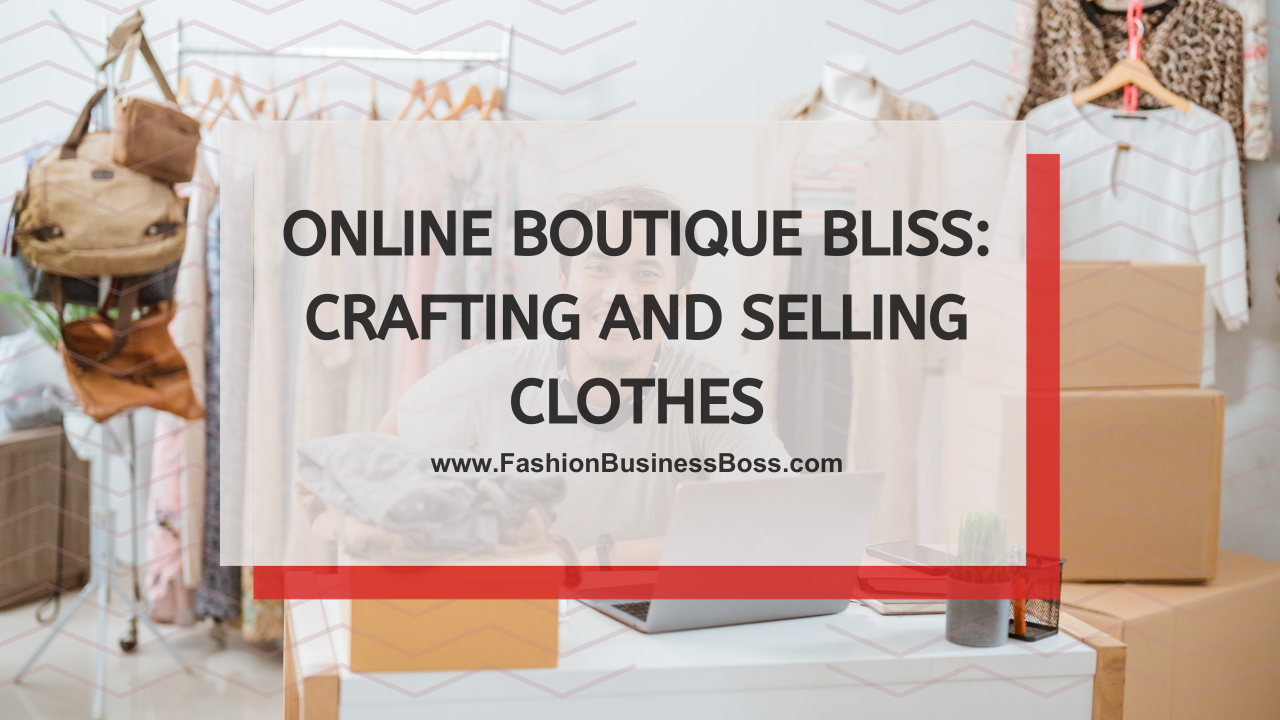Creating and selling clothes online has become an effective and accessible business option. Whether you’re a seasoned designer or just starting out.
To create clothes for effective online sales, design your own collection, size inclusivity, and make an online presence. Market strategically, offer great customer support, and optimize for mobile.
In this article, we will guide you through the essential steps to turn your design ideas into a thriving online fashion store.
Design Your Collection

Designing your collection is an enjoyable step in the process. It involves making choices about fabrics, colors, and styles. These choices need to fit together coherently and match your chosen niche. If you don’t have design skills, partnering with an experienced fashion designer can make a significant difference.
Firstly, consider the fabrics you’ll use. Think about their textures, durability, and how they relate to the comfort and aesthetics of your clothing. Next, pay attention to the color palette. Make sure the colors complement each other and resonate with your target audience. Consistency in colors helps create a strong brand identity.
Style variations are also essential. Offer a range of styles that cater to different preferences within your niche. Whether it’s classic, modern, or something unique, having variety can attract a broader customer base.
Remember, collaboration can be a valuable asset. Working with a skilled fashion designer can bring fresh perspectives and expertise to your collection. It’s all about creating a cohesive and appealing range of clothing that aligns with your brand and speaks to your customers.
Read more about: How Can I Start a Clothing Brand: From Idea to Reality
Size Inclusivity
Understanding the significance of size inclusivity is vital in the fashion world. It involves making clothing accessible to a wide range of body sizes. When you offer various sizes, you’re acknowledging that people come in different shapes and sizes.
Your goal should be to create clothing that not only fits but also looks good on various body types. It’s about making people feel comfortable and confident in what they wear. This commitment to inclusivity goes beyond just numbers on a tag; it’s about embracing diversity and promoting body positivity.
By offering a diverse range of sizes and ensuring your clothing flatters different body shapes, you’re sending a message that everyone is valued and welcome in your brand. This can help build a positive image for your business and set you apart from others in the industry.
Size inclusivity isn’t just a trend; it’s a fundamental aspect of making your fashion brand accessible and relatable to a broader audience. It’s about making people feel seen and appreciated, regardless of their body size.
Prototyping and Testing
Creating prototypes and testing your designs is a smart move before making a large number of clothes. It’s like making a trial version. The purpose is to make sure that your designs are comfortable to wear, work well, and look good.
Prototypes are like early samples of your clothing. You use these to see how they fit and feel on a person. You also check if they serve their intended purpose. For example, if it’s a winter coat, does it keep someone warm?
Testing helps you find any problems or things that could be better. It’s like finding and fixing mistakes before they become big issues. To do this, get feedback from people you trust, like friends or fellow designers. They can tell you what’s good and what needs improvement.
Remember, the goal is to make your designs as good as they can be. Prototyping and testing are steps that help you get there by making sure your clothes are comfy, functional, and attractive.
Sourcing Materials and Production

It’s crucial to find trustworthy suppliers and manufacturers when you’re making clothes. These are the people or companies that provide the materials and make the clothing for you. They play a big role in the quality and cost of your products.
When looking for suppliers and manufacturers, it’s essential to make sure they match your values. For example, if you care about the environment, you’d want suppliers who use sustainable materials. If you’re concerned about fair treatment of workers, you’d seek out those who practice ethical sourcing.
Building strong relationships with your suppliers is vital. It’s like making good friends in business. Good relationships mean better communication and understanding. This can help you get the materials you need on time and ensure that the quality of your clothing remains high.
Finding the right suppliers and manufacturers who share your values and building strong relationships with them are essential steps in making sure your clothing is of the quality you want and aligns with your beliefs.
Read more about: How Can You Make Your Own Clothes: Personalized Fashion
Build Your Online Store
Creating your online store is a critical part of selling your clothing on the internet. Think of it like opening a digital shop. It’s where people will come to see and buy your clothes.
Start by picking an e-commerce platform. These are like the building blocks for your store. Choose one that’s easy for customers to use. Next, build a website that looks good. People are more likely to buy from a site that’s nice to look at. Make sure your website works well on phones and tablets, not just on computers.
Now, show off your clothing! Use high-quality pictures to display them. Think of it like putting your best foot forward. Detailed descriptions are like telling customers the story of each piece. Be clear about sizes, colors, and anything else they need to know.
Your online store is like the front door to your business. Make it welcoming and easy to use, and people will be more likely to come in and shop.
Crafting Online Content
Creating content for your online clothing business is incredibly important. It’s like the heart of your online presence. This content helps people understand and connect with your brand.
Start by writing product descriptions that are interesting and informative. Think of it as telling a story about each piece of clothing. Describe its features, materials, and why it’s special. Make sure to use words that engage the reader.
Visuals are equally crucial. Use high-quality images and videos that show your clothing in detail. Think of it as giving your customers a close look at what they’re buying. When they can see how the clothes fit and move, they’ll have more confidence in their purchase.
Crafting online content means creating engaging descriptions and visuals that help your customers understand and connect with your clothing brand. This content is like a bridge that brings your products closer to your audience, making them more likely to choose your clothing.
SEO and Digital Marketing

Improving your online visibility and reaching more people is vital. It’s like making a road map so others can find you on the internet. To do this, focus on two key areas: SEO and digital marketing.
Firstly, SEO is about making your website show up higher in search results on platforms like Google. Imagine it as putting signposts on the internet highways. Start by researching keywords relevant to your clothing business. These are the words and phrases people use to find products like yours. Use these keywords in your website content to make it more likely for search engines to recommend your site to users.
Secondly, digital marketing involves promoting your business on various online platforms. Think of it as spreading the word about your shop. Social media marketing means using sites like Facebook and Instagram to connect with your audience. Email campaigns involve sending messages to people interested in your products. Paid advertising is like putting up billboards online to attract more visitors.
SEO and digital marketing are ways to make your online store more visible and bring in more visitors. Think of it as creating pathways and signposts to guide people to your clothing business.
Read more about: How to Achieve Your Fashion Goals: Starting a Clothing Line
Customer Support and Live Chat
Providing good customer support is crucial for your online clothing business. It’s like being helpful and friendly to people who come to your shop. It can greatly impact how they feel about your brand.
When customers have questions or concerns, it’s important to address them quickly and effectively. Think of it as being a good listener and problem solver. Answer their inquiries in a timely and helpful manner. This makes customers feel valued and cared for.
Consider adding a live chat feature to your website. It’s like having a friendly assistant available to help visitors in real-time. When potential buyers can get immediate answers to their questions, it can increase their confidence in making a purchase.
Responsive customer service is like being available when customers need you. It can lead to better customer experiences and repeat business. Happy customers are more likely to become loyal customers, and that’s what you want for your clothing business.
Offering excellent customer support and implementing live chat can enhance the shopping experience on your website. It’s like being there to assist and guide customers, which can lead to increased trust and loyalty.
Mobile Optimization
In our modern world, lots of people use smartphones and tablets to shop online. So, it’s crucial to make sure your online store works perfectly on these devices. This is called mobile optimization, and it’s like making your store mobile-friendly.
To achieve this, you need a website design that adapts to different screen sizes. Imagine it as having flexible store shelves that adjust to fit various products. This responsive design ensures that your online store looks good and functions smoothly on small screens.
Intuitive navigation is also vital. Think of it as providing clear signs and directions in your store so customers can easily find what they’re looking for. Mobile users should have a hassle-free shopping experience, just like those on desktop computers.
Mobile optimization is about making your online store work seamlessly on mobile devices. It’s like ensuring that your store’s doors are wide open and welcoming to all shoppers, regardless of the device they use. This helps you reach a broader audience and makes their shopping experience enjoyable.
Fulfillment and Shipping

Efficient fulfillment and shipping are essential components of running an online clothing store smoothly. These processes are like the behind-the-scenes operations that ensure your customers receive their orders on time and in good condition.
To begin, it’s crucial to establish a streamlined fulfillment system. This involves organizing your inventory, packing orders accurately, and preparing them for shipment promptly. Think of it as making sure everything is in order and ready to go before sending it to your customers.
Offering multiple shipping options is like giving your customers choices. Some may want their orders quickly, while others may prefer a more cost-effective option. Providing these choices can cater to different preferences and needs.
Transparency is key when it comes to tracking information. Think of it as providing a clear roadmap for your customers. By offering tracking details, you keep your customers informed about the status and location of their orders. This helps build trust and reduces anxiety about the delivery process.
Read more about: How to Get Clothes to Sell: Boost Your Income
Conclusion
Designing clothes to sell online is a journey filled with creativity, challenges, and opportunities. By defining your niche, conducting thorough research, and embracing digital marketing, you can turn your passion for fashion into a thriving online business. Remember, growth may not come overnight, but with dedication and persistence, you can make your mark in the world of online fashion.
Frequently Asked Questions

Q: How do I begin designing clothes to sell online?
A: To start, define your niche, conduct market research, create a standout collection, and find reliable suppliers.
Q: What’s the significance of SEO in selling clothes online?
A: SEO enhances your online visibility, driving organic traffic and boosting your clothing sales.
Q: How can I ensure a positive customer experience in my online store?
A: Focus on responsive customer support, user-friendly design, and transparent product information.
Q: What’s the role of social media in selling clothes online?
A: Social media aids in brand promotion, customer engagement, and driving traffic to your online store.
Q: Why is size inclusivity important for an online clothing business?
A: Size inclusivity caters to a diverse customer base, fostering inclusivity and broadening your market reach.
To learn more about starting your own clothing business, check out my startup documents here.
Please note that the contents of this blog are for informational and entertainment purposes only and should not be construed as legal advice. Any action taken based on the information provided in this blog is solely at your own risk. Additionally, all images used in this blog are generated under the CC0 license of Creative Commons, which means they are free to use for any purpose without attribution.

Meet Shawn Chun: Entrepreneur and Fashion Business Fan.
I’m a happy individual who happens to be an entrepreneur. I have owned several types of businesses in my life from a coffee shop to an import and export business to an online review business plus a few more and now I create online resources for those interested in starting new ventures. It’s demanding work but I love it. I do it for those passionate about their business and their goals. That’s why when I meet a designer or boutique owner at a craft fair, farmers market, retail location or anywhere else I see myself. I know how hard the struggle is to retain clients, find good employees and keep the business growing all while trying to stay competitive.
That’s why I created Fashion Business Boss: I want to help fashion business owners like you build a thriving business that brings you endless joy and supports your ideal lifestyle.

